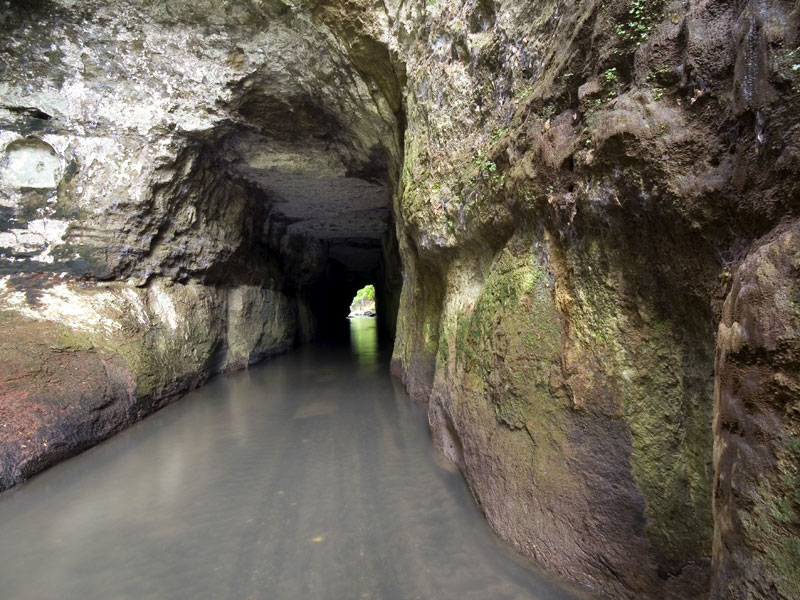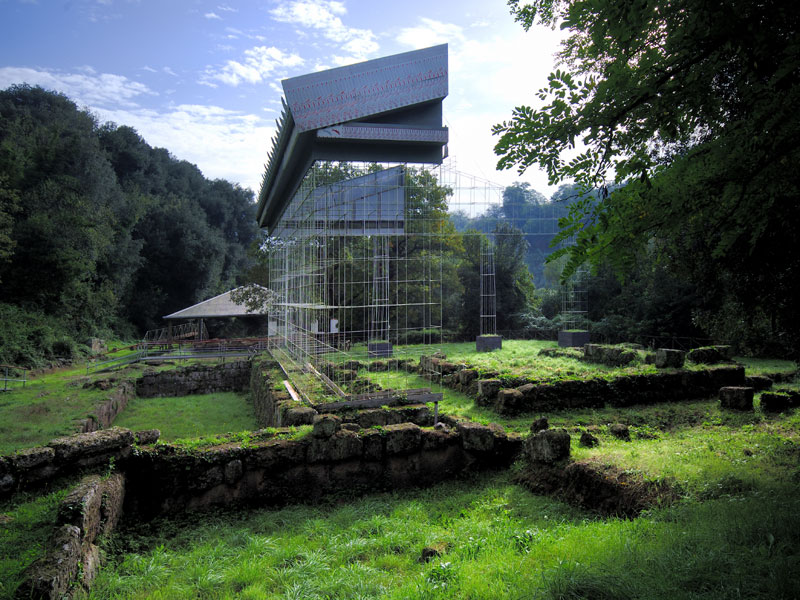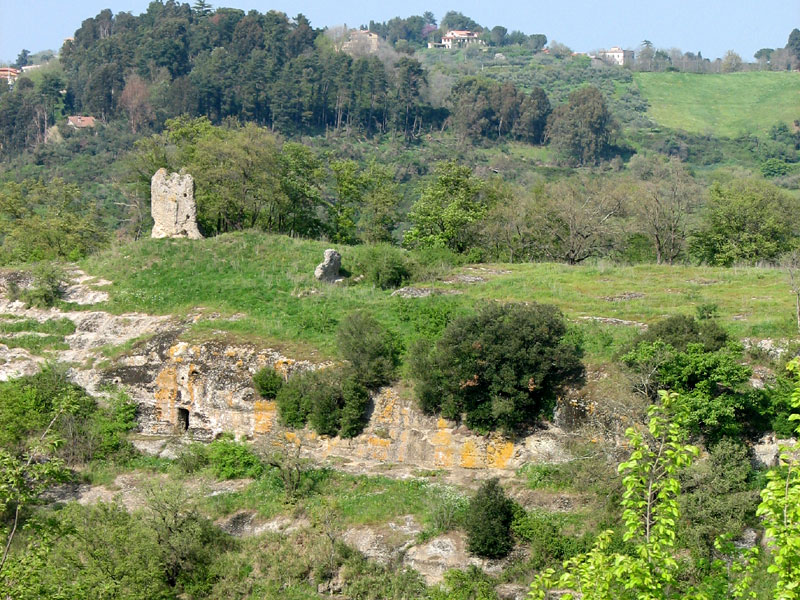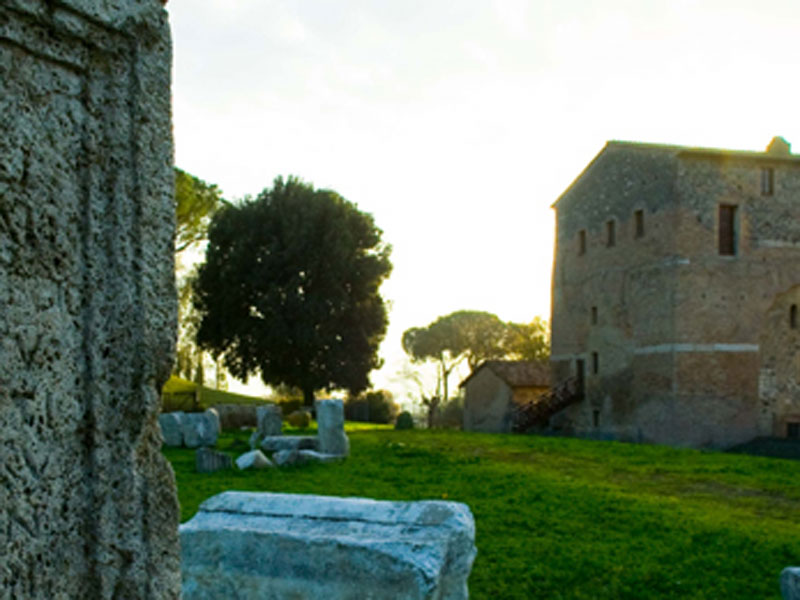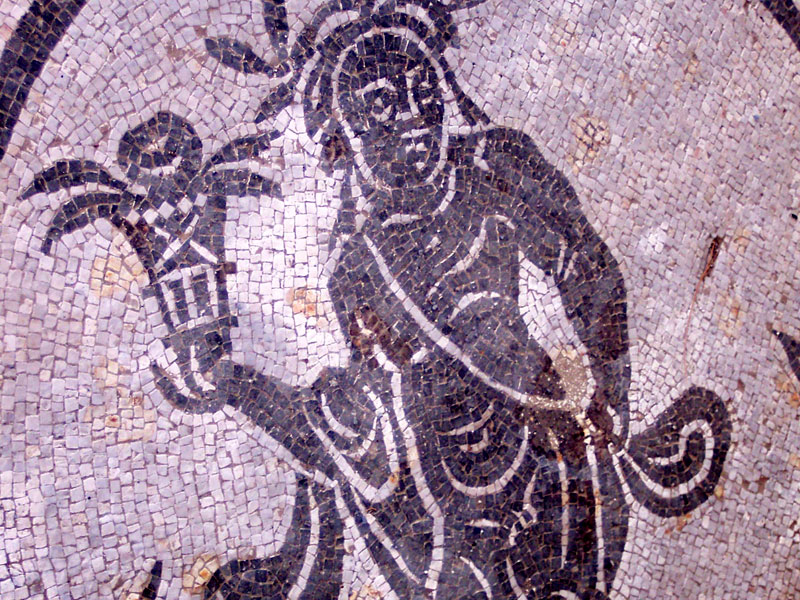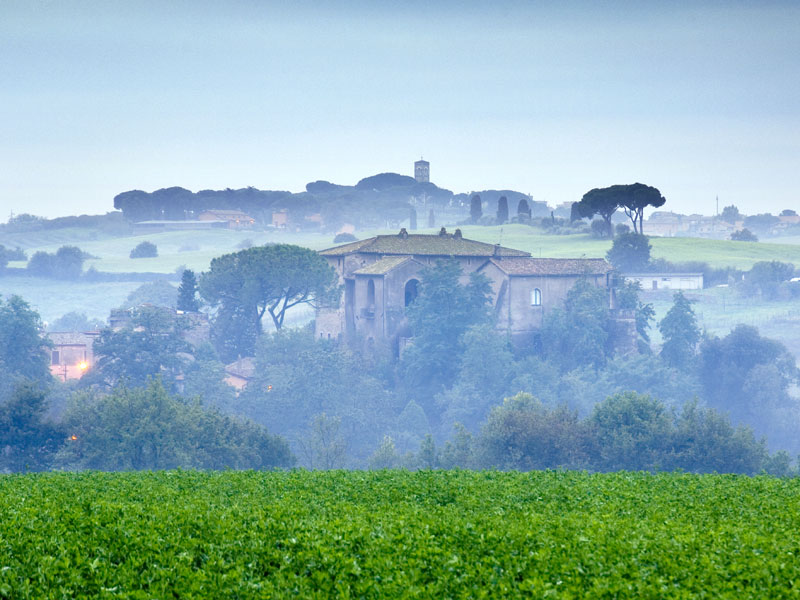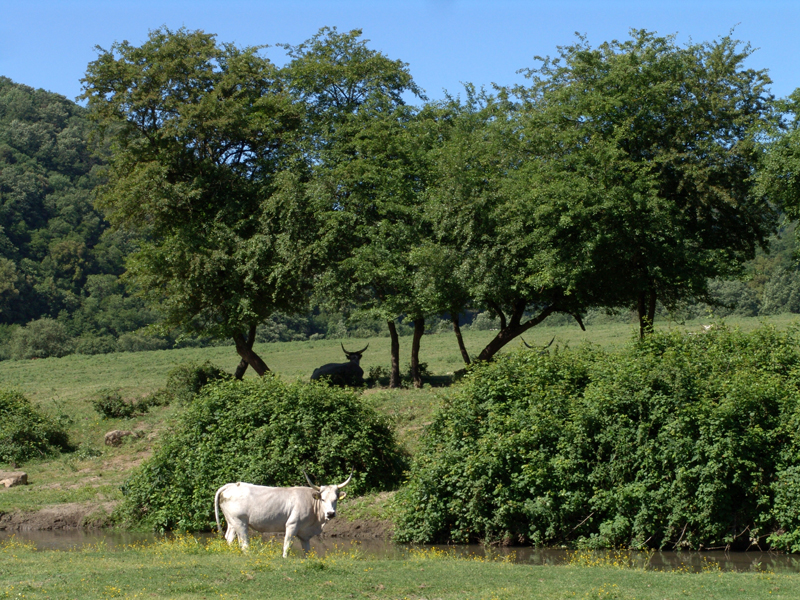Points of Interest
The territory of the Park is extremely rich in historical and artistic features. The most ancient evidences date back to the Etruscan age: among the others, the prestigious remains of the ancient town of Veio, rich in monuments of particular value like Portonaccio Sanctuary, where the famous statue of Apollo has been found, now preserved in the National Etruscan Museum of Villa Giulia in Rome, and the fascinating gallery of Ponte Sodo built along the legendary river Crèmera. In the tufaceous plateaus surrounding the remains of the towns there are several necropolises and funerary structures, like the famous "Tomba delle Anatre" (The Tomb of the Ducks) and "Tomba dei Leoni Ruggenti" (The Tomb of the Roaring Lions), which has been recently discovered and which is considered the most ancient painted tomb of Etruria.
Some great and sumptuous buildings date back to the Roman period: among them, Livia's villa, wife of the Emperor Augustus, in Prima Porta; the villa of Emperor Lucio Vero along via Cassia; Grottarossa necropolis, and the tombs of Fadilla, Nasoni, and Celsa along via Flaminia.
During the Middle Ages, the territory, belonging to the Estate of S. Pietro in Tuscia, was scattered with several fortified buildings like the Towers of the Cornacchie (of the Crows, km 14.8 of via Cassia), of Porta Pertusa (km 18 of via Flaminia), and of Prima Porta. Of great importance are the castle and the village of Isola Farnese, the castle of the Crescenza, and Casale di Malborghetto. Madonna del Sorbo Sanctuary (a medieval castle in the past) and Mola Paradisi (16th century BC) situated along the ditch of S. Antonino (Castelnuovo di Porto) date back to the period between the Middle Ages and the modern age.
Although in the past it suffered urbanization processes, the Park territory is still intact and has preserved its great landscape value. The most important areas for their naturalistic and environmental value are Valli del Sorbo, among the other things a Site of Community Importance (SCI) subject to particular safeguard.
Veio
The ruins of the ancient Etruscan town of Veio are situated near Borgo di Isola Farnese (Rome), on a plateau delimited by Fossi del Piordo and by Valchetta (ancient Crèmera). Veio, the southernmost town of Etruria and the traditional rival of Rome, rules a large territory (Agro Veientano) extending from the right bank of the river Tiber to Bracciano Lake and beyond. The conflict developing between Veio and the emerging Rome, linked to the trade control along the river Tiber and the salt pans, ended after a legendary siege leading to the defeat of the Etruscan town by Furio Camillo (396 BC). In 27 AD, Augustus transformed the town into a Municipium in the attempt to stop its decline, but the latter was inexorable. Only a part of this large archaeological area has emerged with the archaeological excavations.
The most important monument is represented by the out-of-town Portonaccio sanctuary, famous because here the statue of Apollo was found. The urban area was surrounded by imposing walls with several gates, and was crossed by a main road that was paved by the Romans and that used to connect the main urban spaces with each other. The plateau housing the Etruscan town was surrounded by big necropolises scattered along the main access roads to the town. The most famous ones include the Tomb of the Roaring Lions, the Tomb of the Ducks, and Campana Tomb.
Moreover, Veio is known for the presence of a system of subterranean galleries built by the Etruscan engineers, including Ponte Sodo along the ditch of the Crèmera.
Belmonte
Belmonte plateau was probably settled already in the Etruscan period, as the several caves obtained from the tufaceous wall and used in the following centuries as houses make us presume.
A settlement of Belmonte is mentioned for the first time in the 9th century AD; the archaeological remains of this medieval village that can be currently seen probably date back to a period between the 9th and 14th century. Of particular interest, a watchtower that belonged to a fortified area (maybe a castle), separated from the settlement by two artificial ditches and surrounded by defensive walls. The village, in the south, consisted of a group of huts - only the holes for the poles remain - that should not be very different from the ones used by the shepherds of the countryside in the late 19th-early 20th century.
Malborghetto
Casale di Malborghetto derives from a four-front arch dating back to the early 4th century AD, at the crossroads between via Flaminia and a route connecting Veio with the Tiber Valley. The monument was built to celebrate the victory of Constantine over Maxentius in 312 AD. According to the legend, it was built on Constantine's encampment, where the emperor had the miraculous vision of the cross that led to his victory and the triumph of Christianity. In the Middle Ages, the arch was transformed at first into a church, and then into a fortified farmstead surrounded by a village called Burgus S. Nicolai de Arcu Virginia, later called Borghetto, Borghettaccio, or Malborghetto. Belonging since 1278 to Capitolo di S. Pietro, the village was set on fire in 1485, during the battle between Colonna family and the inhabitants of Sacrofano led by Orsini family. In 1744 the farmstead housed a Mail Station for the service from Prima Porta to Castelnuovo, but the structure was transformed soon into a simple rural house. The farmstead houses today the archaeological museum collecting the finds that have been gathered along the ancient via Flaminia.
Livia's Villa
Along via Flaminia, near Prima Porta, there is Livia's Villa, also called Ad Gallinas to celebrate the wonder of the hen with a laurel branch, a sign of prosperity for the Julio-Claudian dynasty. According to the literary sources, the hen would have come from the sky to Livia Drusilla, wife of the Emperor Augustus. Livia was told to breed the hen and plant the branch, from which a small sacred wood would develop. Afterwards, all the emperors, on the occasion of their triumphs, would have a branch of laurel in their hands and a laurel crown on their head, both coming from that wood.
The villa, built on a large terraced area facing the river Tiber, divided into residential and representation sections characterized by rich decorations, and completed with a big thermal area and a garden, is famous for its paintings of a cool and luxuriant garden that were taken off in 1951 and that are now on display in Palazzo Massimo - National Roman Museum.
Borgo di Isola Farnese
The village clings to a cliff at about 1.5 km from the 18th km of via Cassia. The medieval name of Insula derives from the presence of the ditches of Piordo, as well as of Storta and S. Sebastiano valleys around the village, isolating it from the surrounding territory. Of medieval origins, it is mentioned in the 11th century as a castle belonging to the Roman monastery of SS. Cosma e Damiano; in the 13th century it was given to the powerful Orsini family that kept it until 1616, when it was sold to Cardinal Alessandro Farnese, from whom the modern name derives. The medieval fortress is not recognizable today, because it has been annexed into the 17th century baronial palace; however, it is possible to recognize some watchtowers of the fortified walls. A small village with 17th century-style houses surrounds the castle; in the middle, a small square called "della Colonnetta", since it preserves a fragment of Roman column. In the square, there is S. Pancrazio church built in the 15th century and renovated in the 17th century, preserving some 15th and 16th century frescoes and some archaeological evidences like the two capitals forming the stoup.
Sorbo Valleys
The Sorbo valleys offer a particularly charming natural landscape. Thanks to their natural and environmental value, the European Community included them among the Sites of Community Importance benefitting from a particular protection.
Madonna del Sorbo Sanctuary
The Sanctuary is situated on the summit of a cliff in the Sorbo Valley. A centuries-old history marked this fascinating monument which was a medieval stronghold first, and later a monastery of the Carmelite Monks who converted it into a pilgrimage Sanctuary dedicated to the Virgin Mary.



